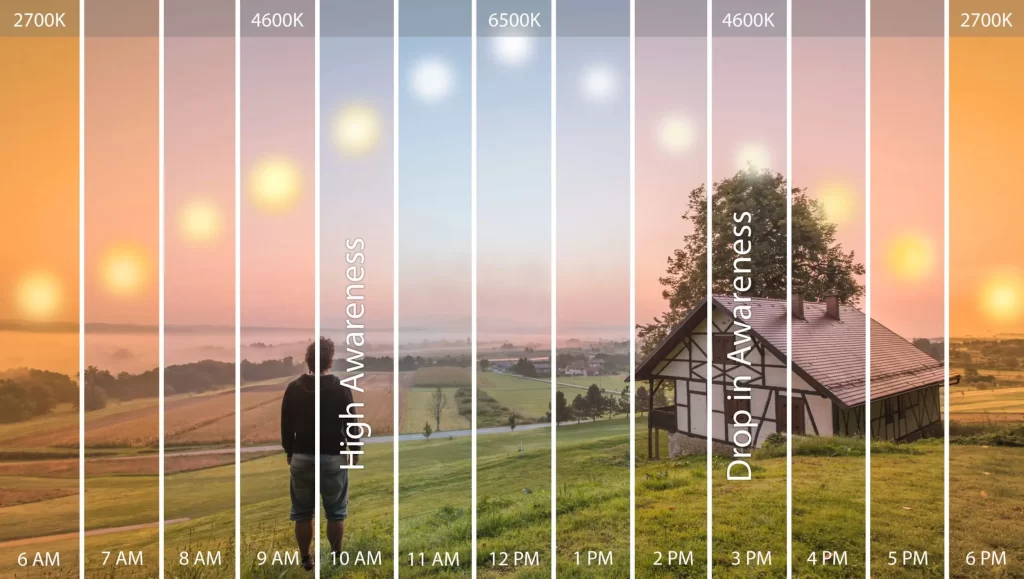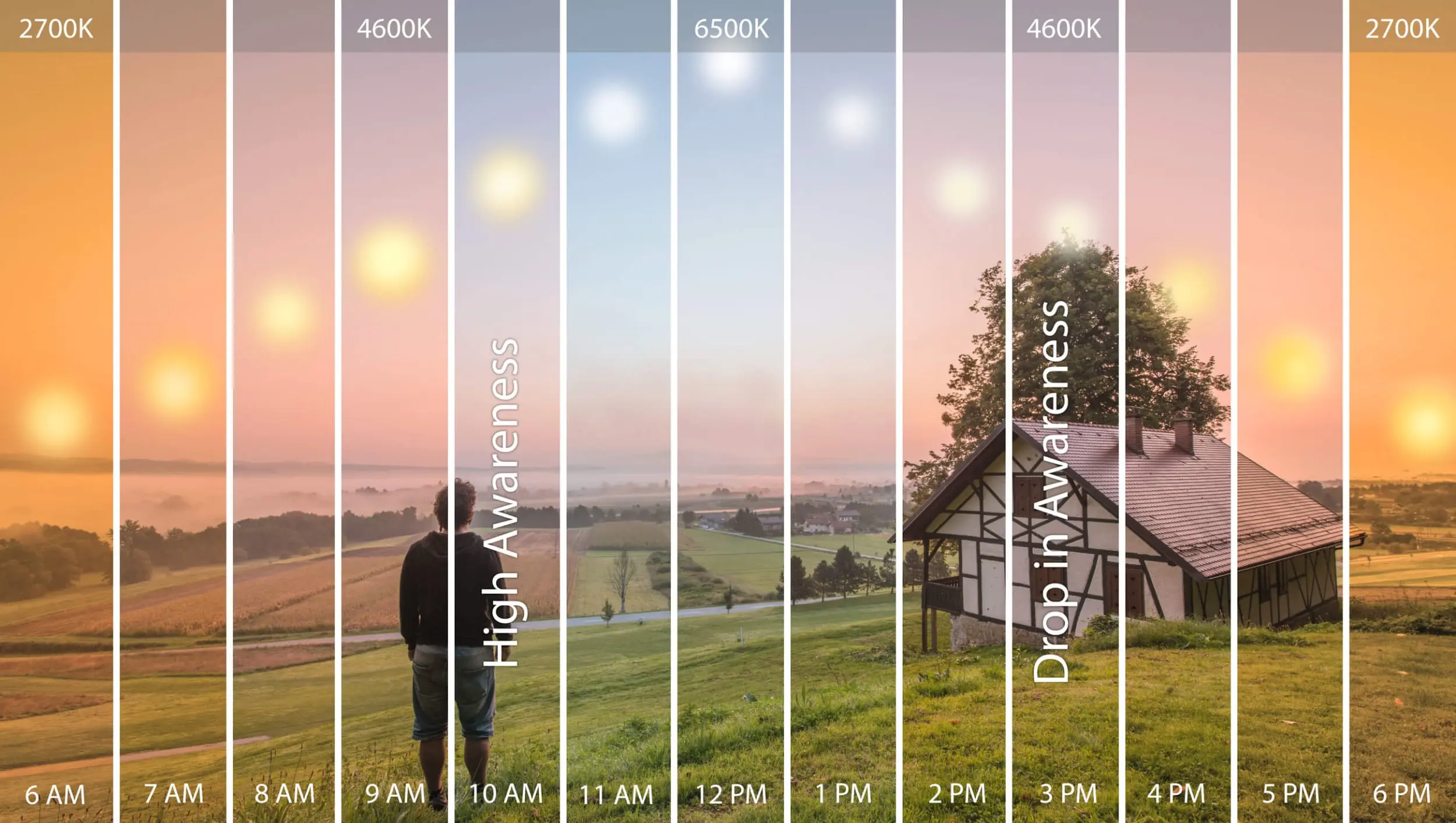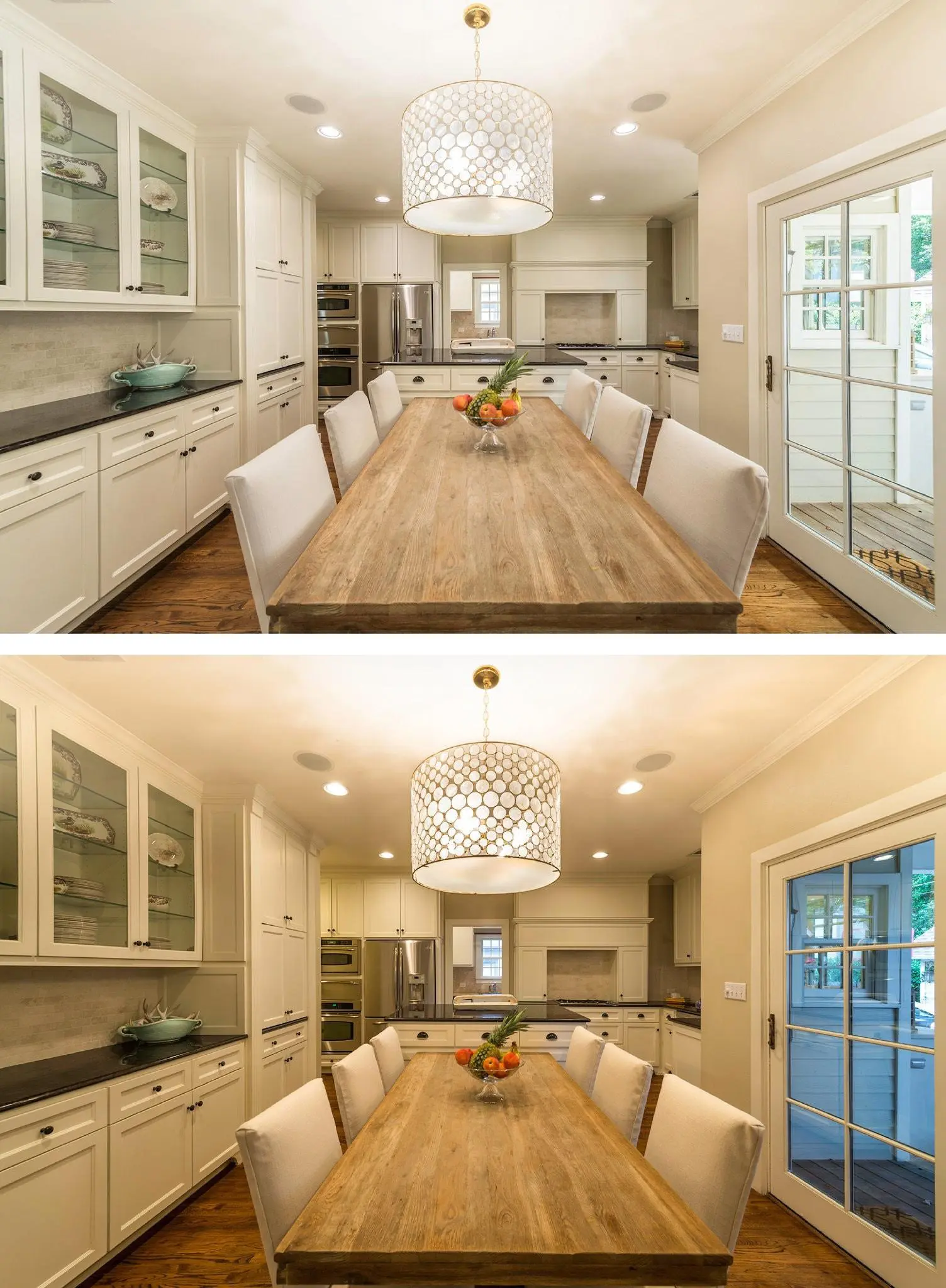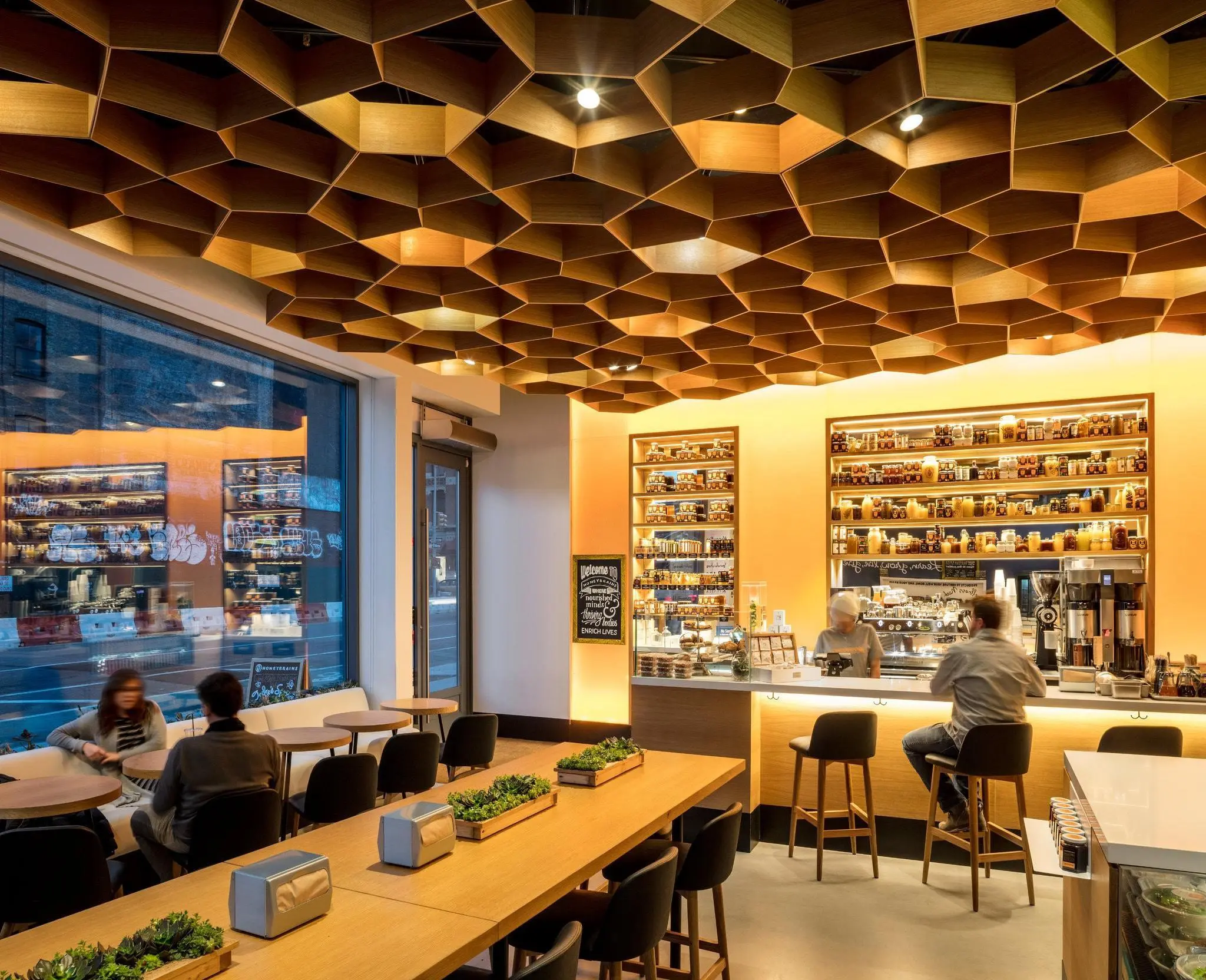Circadian Lighting 101, A New Way of Healthy Living

Understand how LED Lighting can Affect your Health and Learn how to Minimizing the Impact with Circadian Lighting:
Us, as humans, have a unique way to know when we are tired and when we need to hit the hay. Our bodies are able to communicate with our brain and release a chemical called melatonin (you’ve probably taken it as a supplement for your insomnia) to help get to sleep soundly. This process is known as our body’s circadian rhythm. This rhythm is affected by light; natural and artificial.
Naturally, our circadian rhythm is affected by the sunlight. We know it’s time to wake up in the morning with the sunrise, and we start to get tired with the sunset. This is how our sleep cycles are affected. However, with the artificial light that we consume daily, our circadian rhythm can be affected negatively. The more artificial light consumed, the more our circadian rhythm will be offset making it harder to fall asleep or have a normal sleep schedule (and it’s hard enough as it is).
“ People in the developed world today spend, on average, 90 percent of the day indoors and often out of eyeshot of a window” — Undark, 2018
Did you know that inhabitants of cities have more issues with their circadian rhythm? Light pollution negatively affects the cities’ inhabitants with a hoard of health issues from forms of depression to brain, eye, and internal rhythm deterioration. Circadian lighting is a new way of consuming light that mimics natural light as a way to combat these sleepless nights that plague many today.
Scientists state that our “physical drumbeat” is “disrupted to ill-effect by our constant exposure to standard incandescent or fluorescent lighting — and more recently, to the relentless glow of electronic screens” — U.S. DOT, 2015
By replicating sunlight, our body’s biological clock will be reset and changed for the better, resulting in an improved sleep schedule and healthy day-to-day life.
What Exactly Is Circadian Lighting?
Circadian is a new way of lighting to mimic sunlight, and our natural circadian rhythm. It works by changing the lighting throughout the day, changing its color, and intensity to help bring a more stable, sleep/wake cycle (The Lighting Practice).
Circadian lighting uses 3 different methods to mimic sunlight, intensity tuning, color tuning, and stimulus tuning:
● The first method is intensity (brightness) of the light, which also happens to be the most cost-effective and popular one. For instance, the light, like sunrise lighting is subtle, growing in intensity throughout the day and reaching its peak hours of intensity, then falling again. This lighting is dimmable and is able to be manipulated this way, with lower intensity at night.
● Color tuning of the lighting matters as well, which means being able to change from warm and subtle, to white and bright. The correlated color temperature (CCT) and the intensity, mimic the day/night cycle. CCTs for cooler temperatures (4000K to about 10,000K) are when the sun is highest in the sky and people are the most alert. Warmer color temperatures (appox. 2700K-3500K) simulate the sun rising and setting, for a more relaxed reaction to the lighting. An example of this is the implementation of color tuning by Apple with the Night Shift feature that minimizes blue screen light at night.
● Lastly, stimulus tuning is changing the wavelength to a good blue light that more closely resembles that of natural circadian lighting. This is paired with dimmers from intensity tuning for the most effective approach in reducing blue light waves at night.

The image above, published in the New York Times, displays another manner that lighting can directly impact our bodies. While the time and light relationship might differ around the world, this is a great depiction of what circadian lighting mimics — sunlight. In the early morning hours, the sun steadily brightens and intensifies, increasing the overall awareness of the human body. As the evening begins, light darkens once again, with our awareness dropping in motion with the sun. The numbers along the top are examples of intensity in lighting. This image is an example of how intensity in lighting changes with the sun as the day goes by and how circadian lighting changes with it, as well.
Does Circadian Lighting Actually Work?
There is no doubt that sunlight is the best and most natural way to consume light and to get the best sleep/wake cycle that your body needs, but with lifestyles today, consuming sunlight naturally is not easy. Many people work a 9-5 job in an office or a building that needs to use artificial light. Even if the office has an abundant amount of windows, the effect is not the same as being outdoors.
Circadian lighting promotes and mimics sunlight in order to get as close to natural sunlight as possible. There are studies, such as the one conducted by Architect Magazine, proving that circadian lighting does improve day-to-day life, the subjects reported feeling more energetic, well-rested, and less depressed. Because sleep itself impacts our health tremendously, the improvement in lighting we consume in our daily lives can improve our overall health immensely, and not just for getting a better night’s sleep.

It may be difficult to fully grasp how this technology can really change our lives. How often we take for granted and overlook the way our houses are lit, our office spaces, and even our cities.
This image of an early afternoon lit and late evening kitchen fully conveys the difference between circadian and prior lighting technology.
Prior screw in lightbulbs only had the capacity to produce one of these two images, today you can change the intensity with a click of a button. In the top photo, the lighting is bright during the sun’s peak hours of the day, intensity is strong and it creates more awareness and a better mood overally. The second picture is an example of how the lighting has changed, from warmer in color and less intense as the sun has started to go down. The use of a Ketra light bulb has changed the whole mood of this kitchen into something better and healthier.
The light that our eye consumes is more important than you think. Our brain does react with the light that we consume daily from our phones, computers, and the lighting in our businesses and homes. Our eyes consume daylight and artificial light differently, blue light actually inhibiting melatonin response which is what makes us sleepy. So not only does the sunlight affect our sleep, but it also affects our mood and alertness according to the University of Washington. When was the last time you couldn’t get a good night’s sleep? Did you feel like your day was less productive and less positive?
In order to improve overall health, circadian lighting implemented in homes and businesses is a small change with huge benefits. There are already companies making the switch to better lighting, and better health.

For example, this cafe named Honeybrains in Manhattan NYC, has implemented circadian lighting to mimic sunlight in the building. This aesthetic matches its healthy and homey branding, and it also improves the health and mood of the employees and customers alike. Soon enough, circadian lighting will become the new normal, many businesses will be adopting this new lighting style which will boost overall production. This type of lighting can even save money by being able to skip the energizing supplements that some might feel the need to consume. Circadian lighting seems to be the future of lighting, that only comes with benefits.
Not only is circadian lighting used in houses and homes, but in hospitals as well. With the known health benefits, many hospitals are utilizing circadian lighting for their patients. The photo above shows the difference in lighting overtime.
The mood of the room changes with the lighting and you feel how much more comfortable and natural the room seems with this kind of change. With many patients having to be woken up many times over the night, the hope is that this kind of lighting will help patients sleep better and easier. According to the Philadelphia Inquirer, not only that, but it will improve mood among the patients, making their stay at the hospital a bit more positive, and able to recuperate faster, hopefully.
The artificial lighting that we have been consuming day to day inhibits our melatonin production, making it harder to fall asleep and stay asleep. Knowing that sleep affects so much of our physical health, it needs to be a priority in life. Harmful blue light from our phones and computers contribute to this problem, as well as, the standard building and office lighting.
With many more businesses adopting this new kind of lighting, many changes will happen with their employees and customers, making others follow suit. Circadian lighting will become the new normal. Circadian lighting is more than just lighting itself, it’s a healthier way of living. This one simple change could be the one you need. Better mood, more awareness, increased productivity, and better sleep. Making this change is a step closer to a happier and healthier future.
For more information regarding circadian lightening and your LED Lighting products, contact us for a free consultation!
Email: sales@wcico.com
Phone number: (805) 499- 9513